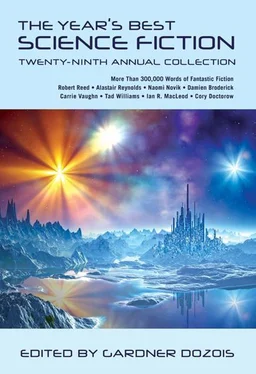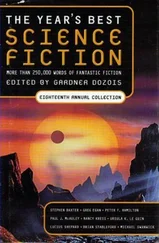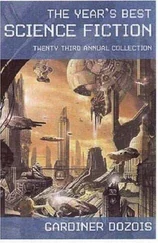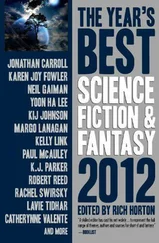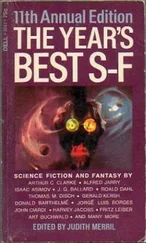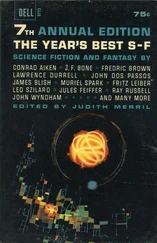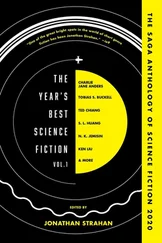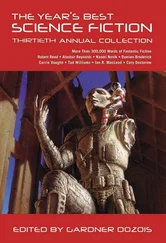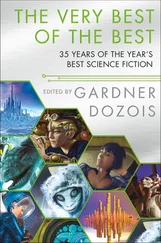Less dark and more lighthearted is Happily Ever After (Night Shade Books), an anthology of retold fairy tales edited by John Klima, and featuring strong work by Howard Waldrop, Gregory Frost, Bruce Sterling, Nancy Kress, Neil Gaiman, Jane Yolen, Theodora Goss, Garth Nix, and others. People of the Book: A Decade of Jewish Science Fiction and Fantasy (Prime Books), edited by Rachel Swirsky and Sean Wallace, features SF and fantasy stories (mostly fantasy), by Peter S. Beagle, Theodora Goss, Jane Yolen, Alex Irvine ,Neil Gaiman, Benjamin Rosenbaum, and Michael Chabon.
There were a lot of reprint horror anthologies this year, including several urban fantasy/paranormal anthologies. The best of these was probably The Urban Fantasy Anthology (Tachyon Publications), edited by Peter S. Beagle and Joe R. Lansdale, which featured good stories by Neil Gaiman, Peter S. Beagle, Tim Powers, Thomas M. Disch, Bruce McAllister ,Joe R. Lansdale, Susan Palwick, Charles de Lint, Suzy McKee Charnas, Carrie Vaughn, Patty Briggs, Emma Bull, and others. The somewhat grittier Crucified Dreams (Tachyon Publications), edited by Joe R. Lansdale, features strong reprints by Harlan Ellison, Lucius Shepard, Joe Haldeman, Octavia Butler, Stephen King, and others. And 2011 brought us two reprint anthologies that give us an interesting overview of the recent work of younger writers who have been influenced by H. P. Lovecraft enough to want to play in his Cthulhu mythos universe, The Book of Cthulhu (Night Shade Books), edited by Ross E. Lockhart, and New Cthulhu: The Recent Weird (Prime Books), edited by Paula Guran. The best stories in The Book of Cthulhu include works by Michael Shea, Gene Wolfe, T.E.D. Klein, Bruce Sterling, and Laird Barron. The best stories in New Cthulhu: The Recent Weird include works by Neil Gaiman, Elizabeth Bear and Sarah Monette, Caitlin R. Kiernan, Laird Barron, and Paul McAuley. Stories by Charles Stross, Elizabeth Bear, and Cherie Priest appear in both volumes. There were two reprint anthologies of zombie stories, Zombies!, Zombies!, Zombies! (Vintage Black Lizard), edited by Otto Penzler, and Z: Zombie Stories (Night Shade Books), edited by J. M. Lassen, and a book of vampire stories, Vampires: The Recent Undead (Prime Books), edited by Paula Guran.
There were also two massive reprint anthologies, The Century’s Best Horror Fiction, Volume One: 1901–1950 and The Century’s Best Horror Fiction, Volume Two: 1951–2000 (Cemetery Dance Publications), both edited by John Pelan.
* * *
It was a solid but unexciting year in the genre-oriented nonfiction category. There were a number of books of essays by or about genre authors, including Bugf#ck: The Useless Wit and Wisdom of Harlan Ellison (Spectrum Fantastic Art), by Harlan Ellison, edited by Arnie Fenner; The Ecstasy of Influence: Nonfictions, Etc. (Doubleday), by Jonathan Lethem; Unstuck in Time: A Journey Through Kurt Vonnegut’s Life and Novels (Seven Stories Press), by Gregory D. Sumner; And So It Goes: Kurt Vonnegut: A Life (Henry Holt and Co.), by Charles J. Shields; Context (Tachyon Publications), by Cory Doctorow; The Sookie Stackhouse Companion (Ace), by Charlaine Harris (which also contains a previously unpublished Sookie Stackhouse novella); The Hollows Insider (Harper Voyager) by Kim Harrison; In Other Worlds: SF and the Human Imagination (Doubleday), by Margaret Atwood; Becoming Ray Bradbury (University of Illinois Press), by Jonathan R. Eller; and Musings and Meditations: Reflections on Science Fiction, Science, and Other Matters (Nonstop Press), by Robert Silverberg.
There was an autobiography, Nested Scrolls: The Autobiography of Rudolf von Bitter Rucker (Tor), by Rudy Rucker; an assembly of lectures by genre figures, Thirty-Five Years of the Jack Williamson Lectureship (Haffner Press), compiled by Patrice Caldwell and Stephen Haffner; two books of reviews, Sightings: Reviews 2002–2006 (Beccon Publications), by Gary K. Wolfe, and Pardon This Intrusion: Fantastika in the World Storm (Beccon Publications), by John Clute; and, as usual, several books about science fiction itself, including Evaporating Genres: Essays of Fantastic Literature (Wesleyan University Press), by Gary Wolfe; Science Fiction and the Prediction of the Future (McFarland & Company, Inc.), edited by Gary Westfahl, Wong Kin Yuen, and Amy Kit-sze Chan; and Science Fiction: A Very Short Introduction (Oxford University Press), by David Seed. A study of the steampunk subgenre was The Steampunk Bible: An Illustrated Guide to the World of Imaginary Airships, Corsets and Goggles, Mad Scientists, and Strange Literature (Abrams Image), by Jeff VanderMeer with S. J. Chambers (which probably earns the award for most colorful title of the year).
An offbeat item is a collection of essays about pioneering genre movies by the late Kage Baker, Ancient Rockets: Treasures and Trainwrecks of the Silent Screen (Tachyon Publications), by Kage Baker, edited by Kathleen Bartholomew. An even more offbeat item—in fact, perhaps the oddest book you’ll read this year—was posthumously assembled from the extensive notebooks left behind by the late Philip K. Dick, The Exegesis of Philip K. Dick (Houghton Mifflin Harcourt), edited by Pamela Jackson, Jonathan Lethem, and Erik Davis. I made my way through ten or twenty pages of this, and put the book down feeling that it left the question of whether Dick was a genius or completely insane up in the air—but, whichever it was, I was much too stupid to successfully absorb his Exegesis . I suspect all but the most dedicated Phil Dick fans (or those who are geniuses themselves) will probably bounce off it as well.
Not technically genre-oriented, but a book that will interest many genre readers, and one that is sorely needed, in these credulous times when more Americans believe in angels than in evolution, and many don’t even believe that the moon shines by reflected light from the sun, is Denying Science: Conspiracy Theories, Media Distortions, and the War Against Reality (Prometheus Books), by SF writer John Grant.
2011 was another weak year in the art-book market, even weaker than the year before. As usual, your best bet was probably the latest in a long-running Best of the Year series for fantastic art, Spectrum 18: The Best in Contemporary Fantastic Art (Underwood Books), edited by Cathy Fenner and Arnie Fenner. Also quite good were Masters of Science Fiction and Fantasy Art (Rockport Publishers, Inc.), assembled by Karen Haber; Exposé 9: Finest Digital Art in the Known Universe (Ballistic Publishing), by Daniel P. Wade; A Tolkien Tapestry: Pictures to Accompany The Lord of the Rings (HarperCollins); and Fantasy + 3: Best Hand-Painted Illustrations (CYPI/Gingko Press), edited by Vincent Zhao.
There were a few excellent books collecting the works of single artists, the best of which was probably Hardware: The Definitive SF Works of Chris Foss (Titan), by Chris Foss, although Jeffrey Jones: A Life in Art (IDW Publishing), by Jeffrey Jones, was also very good, and Mark Schultz: Various Drawings, Volume 5 (Flesk), by Mark Schultz, was worthwhile as well. Girl Genius Book Ten: Agatha Heterodyne and the Guardian Muse is the latest in the Hugo-winning series by Phil Foglio and Kaja Foglio, and Lost & Found: Three by Shaun Tan (Arthur A. Levine Books) is a collection of picture books by the creator of last year’s Oscar-nominated short film, The Lost Thing , which is included.
Читать дальше
